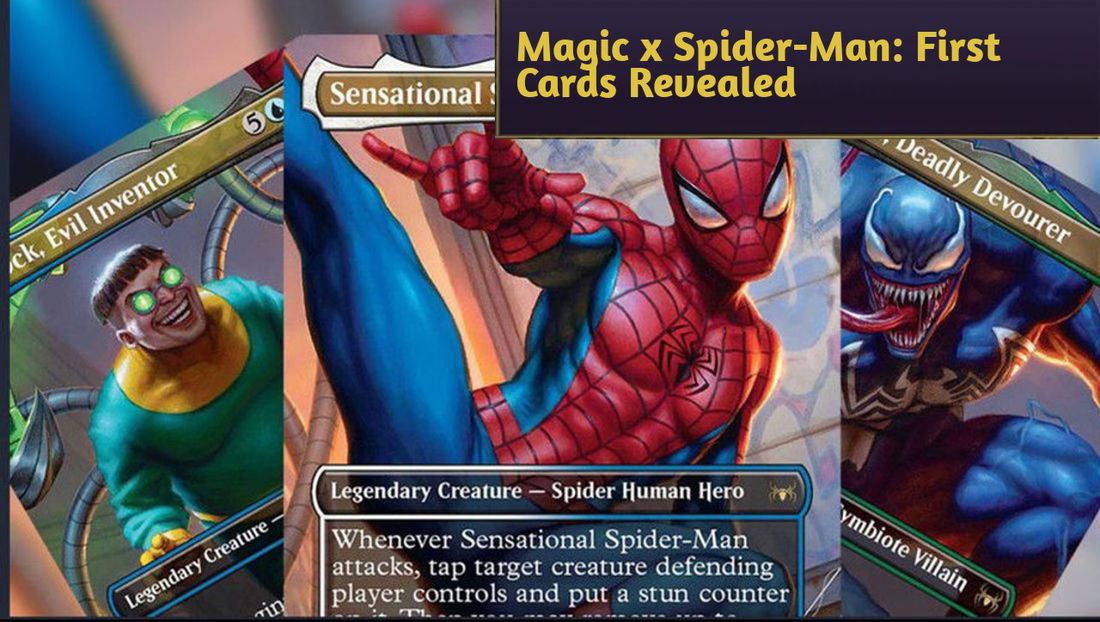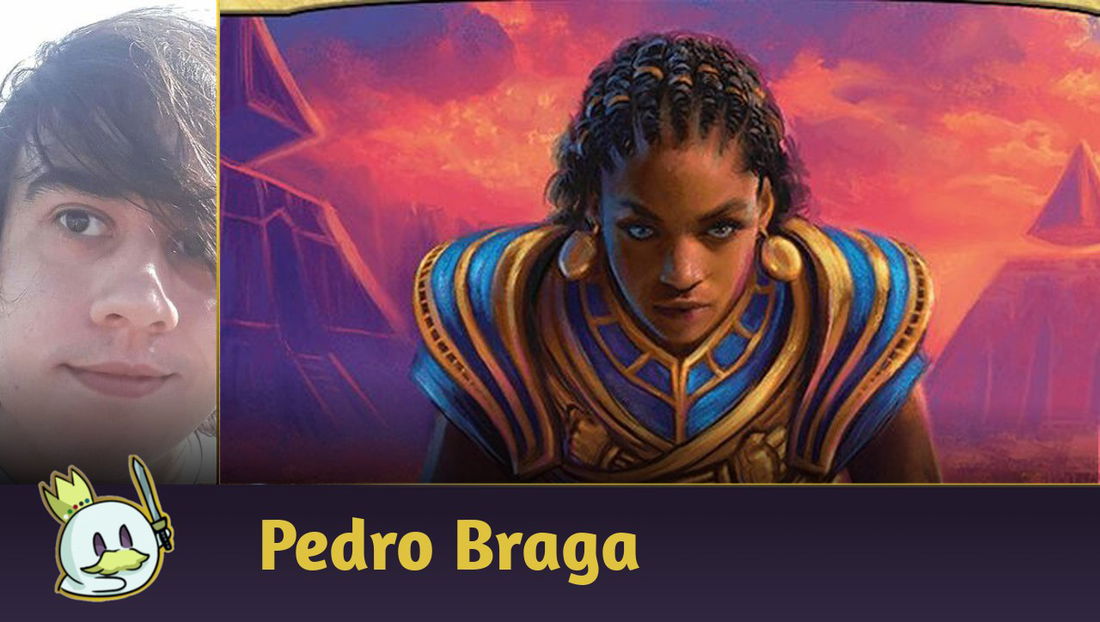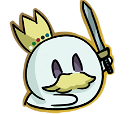With over three decades of existence, the history of Magic: The Gathering as a competitive card game is one of the most fascinating to learn about for TCG enthusiasts. Many of the fundamentals that permeate many other games were born with Magic, and many of these came not only from design decisions but also from building more innovative decks.
To celebrate this long history, we started a series of articles about the decks that marked Magic's history, strategies that changed the way of thinking about the game, building lists, which cards to add and even the way the TCG's design was developed.
Ad
We separated the series into three episodes - one for each decade - and in this first article, we delve into the decks between 1993 and 2003, a time when many concepts of Magic as a game were still being tried, tested and, consequently, broken - but also a period when many deckbuilding fundamentals as we know it today were born.
Decks that made History in Magic: 1993 to 2003
1993 - The First Combo
There are few records of Magic decklists from 1993. The game was revealed and tested during GenCon that year, but there are no lists from that time available.
We know that Magic gained more rules as the game was experimented with and booster packs and decks were opened by buyers. In its original concept, it was not expected that the TCG would be so successful that people would seek out more copies of the best cards to improve their decks through purchases or trades - Richard Garfield's expectation was that a game of Magic would be more like Limited, where people play with what they open, than Constructed, where people build their lists.
Eventually, players began to think of lists like 30 copies of Lightning Bolt with 10 Mountains, or the famous combo of Channel, Black Lotus and Fireball that would guarantee an instant win on the first turn.
To address this problem, Steve Bishop, one of the first designers of Magic, suggested changing the minimum number of cards in a deck from 40 to 60 and limiting to four copies of the same card in a list, establishing the deckbuilding of Magic and several other card games as we know it today.
1994 - Lestree Zoo
The first Magic World Championships took place in 1994 during GenCon, in Milwaukee, Wisconsin in the United States. The most famous deck of the event, and one of the few known in history, was Angel Stasis by champion Zak Dolan, but the list that perhaps contributed the most to the evolution of the game, or gave signs of how the concept of deckbuilding was evolving, was the list of his opponent in the finals, the Frenchman Bertrand Lestree.
Lestree's list is not very different from what we see in many Aggro decks to this day, in 2025: a mix of high-power, low-cost creatures (Kird Ape, Argothian Pixies and Whirling Dervish) and several spells that serve both to deal with the opponent's board and to deal damage to the player (Lightning Bolt, Chain Lightning, Psionic Blast and Fireball).
If we look deeper, we realize that Lestree's list goes so far as to have meta calls: Argothian Pixies, for example, is an excellent blocker against Juggernaut, which, as a 5/4 for 
Some Sideboard choices, like perhaps Serendib Efreet, may have been selected to deal with specific matchups since, despite the damage it deals to its controller every turn, Efreet dodges Lightning Bolt and Chain Lightning, and perhaps even the inclusion of Psionic Blast was made to deal with Serra Angel and even the opponents' Serendib Efreet.
Ad
Lestree's list does have some things that could be improved with the deckbuilding philosophy we have today, but seeing how Aggro has progressed in the first year of Magic and the way some of its fundamental principles were already embedded in the card game culture in 1994 is admirable.
1995 - The Deck
The Deck was probably the first major contribution to non-Aggro lists in Magic and where the origin of terms like card advantage came from. In theory, it was the first pure Control in history - the founder of the famous saying “the player with the most cards in hand will win the game eventually”.
Brian Weissman's list has a dozen elements that we find in most Control lists today: cheap removal, Counterspell, a game-winning threat when stabilized with Serra Angel, and sources of card advantage with Jayemdae Tome, Ancestral Recall, Braingeyser and Recall, as well as Disrupting Scepter and Moat to limit the opponent's resources and ability to attack.
These elements permeate Control decks from all Magic formats to date. Jayemdae Tome became The One Ring and Teferi, Hero of Dominaria, but the potential to establish a victory through the inevitability of having more resources than your opponent is still essential for archetypes aiming for longer games, and the concepts presented by Weissman in 1995 are the initial foundation for the evolution that this macro-archetype has undergone in the following decades.
1996 - Necropotence
If we access an old archive of magazines from that time, we will see that most of the reviews about the Ice Age set place Necropotence as one of the worst rares of the expansion (and Balduvian Horde as one of the best). Some time later, it was discovered that everyone had misjudged the card.
Necropotence gave rise to another core concept in Magic: treating your life points as resources - one life is not zero and the game continues until someone reaches zero, and one life is all you need if the other 19 are turned into cards in your hand.
Thus was born the famous archetype that permeated Standard (Type 2 at the time), gaining popularity when Leon Lindback took third place in the first Magic Pro Tour, and gave rise to the period known as Black Summer: the first time that a strategy was so dominant in the game that the competitive Metagame was composed of “deck vs. anti-deck”.
Although dozens of broken cards had been released before, with the expansion of tournaments and the birth of both the Pro Tour and the Type 2 format, Necropotence can be considered the first broken deck in the history of competitive Magic.
1997 - Turbo Xerox
1997 was a crucial year for deckbuilding. On the one hand, we had the birth of RecSur and ProsBloom as the first pure combo decks in the history of the game since the concept of 60-card formats with four copies of each card was implemented, but beyond the rise of the combo, there is a concept that has become a pillar of the eternal formats forever.
Ad
Alan Comer is considered one of the most innovative players of his time and finished second in the Southern California Regionals with a deck that played without rares and challenged the concept of 24 lands and the importance of playing one land per turn established by Brian Weissman's The Deck in 1995 by playing a list with 17 lands.
The theory behind Alan's choice became known as Turbo Xerox, where he argued that by having fewer lands, a deck has the advantage of fewer bad topdecks than its opponents. After all, while they draw a Mountain when they already have five in play, we will be drawing more spells to keep our flow in the game.
To avoid not having resources to play their spells, Turbo Xerox would replace these lands with spells that allow them to draw more cards and/or filter the top. This way, a player would have more access to information and cards than their opponent while being able to find lands early in the game, or even avoid them in favor of more action when we reach a certain amount of available mana.
This concept gave rise to the famous Tempo decks that today permeate Legacy, Vintage, Modern and even Pioneer in archetypes such as Izzet Phoenix, Dimir Frog, Temur Delver, among other strategies that are based on the theory created by Alan Comer to minimize the number of lands needed via cheap cantrips such as Preordain, Ponder or Consider.
1998 - Academy
The years 1998 and 1999 saw a long period in competitive Magic known as Combo Winter, mostly motivated by the release of the infamous Urza's Block - a series of three expansions in which several cards focused on artifacts and the ability to untap lands and/or generate extra mana.
Among them, a cycle of legendary lands became known forever, especially due to its blue version: in a format with Voltaic Key, Mox Diamond, Lotus Petal, Mana Vault, among other cheap and powerful artifacts, it was easy to break Tolarian Academy.
It didn't take long for Academy to dominate tournaments due to its ability to generate tons of mana: all it took was a specific combination of artifacts and the land in play to start generating positive mana that, with Mind Over Matter, would turn into loops with Windfall and Time Spiral until its controller had enough mana to play Stroke of Genius and force the opponent to draw the entire deck.
Academy was one of the many proofs that there is no way to fix free mana in Magic. You can limit it with lands, create conditions for artifacts not to untap, and any other means to limit it will be broken in some way by the players.
It is argued to this day that, in a world without banned or restricted cards, Academy would possibly be the most powerful Magic deck of all time due to the ease of generating mana very quickly with it and the diversity of ways to untap lands that exist in the game today.
1999 - Broken Jar
Named by some as the most broken combo deck of all time, Broken Jar is the natural continuation of the design mistake that Urza's Block caused in Magic, and also the protagonist of the first emergency ban in history.
Ad
Before its release, thousands of players sent letters to Wizards mentioning the possibility of breaking Memory Jar using Megrim to force the opponent to discard several cards at once with the enchantment and the ease of completing this combo due to the high availability of cheap tutors at the time.
Despite the warnings, Wizards chose not to ban Memory Jar upon its release, and after it took over at Grand Prix Vienna, the company decided to make an emergency announcement 14 days after the card's release, placing it on the game's Banned list.
2000 - Rebels
Rebels is an archetype from a time when Magic still had a format called Block Constructed - a kind of “reduced Standard” where only the three sets that make up a “Block” (the last example was Khans of Tarkir / Fate Reforged / Dragons of Tarkir). The idea of this format was to promote the interactions and decks that expansions created with the same theme could create and serve, in some cases, to get a sense of what Standard could be like post-rotation.
Now, the Mercadia block was in an intriguing position: Wizards needed to scale down the power level after releasing three of the most broken expansions of all time in the previous block, and the difference between Mercadia and its predecessor and successor is remarkable - yet one deck broke the block format and starred in one of the most dominant Pro Tour Top 8 finishes in history.
Rebels was a highly synergistic archetype around creatures that shared the Rebel type. Most cards within this theme could pay mana and tap to get another Rebel with a higher mana value than itself, ensuring that the player could always have a creature in play if they had no better options in hand.
This deck was so successful that, even with a giant target on its back, it managed to get six spots in the Top 8 of Pro Tour New York that year, with players using meta calls like Story Circle and Voice of Truth in the maindeck to play against the mirror. Rebels didn't win Pro Tour New York, as they lost the finals to the only Top 8 contender besides it: a lock list with Rising Waters and the interaction of cards like Daze and Gush to “untap” lands.
Its impact, however, was felt and led to the banning of Lin-Sivvi, Defiant Hero - a card that may have prompted, five years later, a change in the Legends Rule: at the time, if a player had a Legendary Creature in play, their opponent could not play a Legendary with the same name, so whoever found Lin-Sivvi first had a huge advantage at the mirror.
2001 - The Rock
After a long turbulent period of combos, we return to the era of fair decks with one of Magic's most famous archetypes, the father of Midranges: The Rock.
This deck was born in 1999 at the hands of player Sol Malka, who called the deck “The Rock and His Millions”, a reference to former WWE wrestler and actor Dwayne “The Rock” Johnson.
In June 2001, the archetype was reborn and became the reference for the Midrange fundamentals as we know them today. Apocalypse provided two core cards for the heart of this archetype and remained staples for years - Spiritmonger and Pernicious Deed. Today, these cards seem relatively irrelevant (Pernicious Deed would still be strong in Standard), but back then, people looked at Spiritmonger the same way we look at Sheoldred, the Apocalypse.
Ad
In the following years, it solidified itself as the Midrange of today, with a mix of powerful low-cost creatures, cheap removals, discards, ways to accelerate mana and many cards that generated two-for-one effects, or that protected themselves excellently - other expansions made it evolve in Extended with the insertion of Ravenous Baloth, Sakura-Tribe Elder and, eventually, the versions with Tarmogoyf, Thoughtseize and Dark Confidant that were its peak until the end of Extended and that gave rise to Jund as it was born in Modern, making the heart of The Rock remain in competitive Magic for more than two decades.
2002 - Psychatog
Psychatog was, for many years, one of the main threats to Control and Tempo decks in competitive Magic formats until it was demolished by power creep, and its long history of archetypes that includes “Gro-A-Tog” and even versions with Dredge and/or the combo between Counterbalance and Sensei’s Divining Top has its origins in the list used by Carlos Romão to win the 2002 World Championship.
Despite its Control guise, Psychatog was geared towards a pseudo-combo where its plan involved generating all the mana possible, casting Upheaval to return all permanents to their owners’ hands and casting Psychatog on an empty board and discarding until the players had seven cards in hand and a full graveyard for its win condition to attack unimpeded.
This was also one of the first archetypes to use the toolbox concept in the Sideboard thanks to the famous Wishes cycle (with Cunning Wish), which allowed cards to be retrieved from outside the game to be played.
Today, Psychatog's legacy can be seen in the impact that a card inspired by it, Psychic Frog, had in Legacy, where it was banned for making Reanimator's game plan too easy, while it is one of the main staples of Modern in Abhorrent Oculus and Goryo's Vengeance decks.
2003 - Goblins Bidding
Goblins Bidding was one of, if not the best, Standard deck of its era and before Mirrodin brought the horrors of Affinity to Magic's history, but its value goes far beyond being a highlight of that year: the Onslaught block was widely known for introducing a dozen interactions between creature types that, before, were only found in some cards like Lord of Atlantis, Goblin King and Priest of Titania.
This set of expansions elevated the concept of tribal decks (named today as kindred) and provided the foundation that made Goblins one of the most recognized archetypes in the history of competitive Magic and, for years, one of the best decks in Extended and Legacy with the arrival of Aether Vial in the following years - a position it no longer occupies today, but it is still known as one of the most famous creature types of all time.
Wrapping Up
That's all for today.
In the next article, we will cover the most iconic decks from 2004 to 2014, a period where Magic was marked by power creep and some fundamental changes in the way of building lists and seeing the game in both competitive and casual aspects. A period where more formats were born and the diversity of strategies grew with it.
Ad
Thanks for reading!









— Comentarios0
Se el primero en comentar